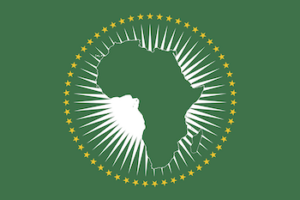
*On this date in 2002, the African Union (AU) was formed. This African continental union consists of 55 member states located in Africa.
The African Union has both political and administrative bodies. The highest decision-making organ is the Assembly of the African Union, comprised of all the heads of state or government of member states of the AU. The Assembly is chaired by Félix Tshisekedi, President of the Democratic Republic of the Congo. The AU also has a representative body, the Pan-African Parliament, which consists of 265 members elected by the national legislatures of the AU member states.
Its president is Roger Nkodo Dang. Other political institutions of the AU include the following: The AU was announced in the Sirte Declaration in Sirte, Libya, in 1999, calling for establishing the African Union. The bloc was founded in 2001 in Addis Ababa, Ethiopia, and launched in 2002 in Durban, South Africa. The AU intended to replace the Organization of African Unity (OAU) established on 25 May 1963 in Addis Ababa by 32 signatory governments; the OAU was disbanded in July 2002.
The AU's most important decisions are made by the Assembly of the African Union, a semi-annual meeting of the heads of state and government of its member states. Within the African Union, there are official bodies, such as the Peace and Security Council and the Pan-African Parliament. The AU's African Union Commission secretariat is based in Addis Ababa.
The African Union has more than 1.3 billion people and an area of around 30 million km2 (12 million sq mi). It also includes world landmarks, such as the Sahara and the Nile. The primary working languages are Arabic, English, French, Portuguese, Spanish, and Swahili.